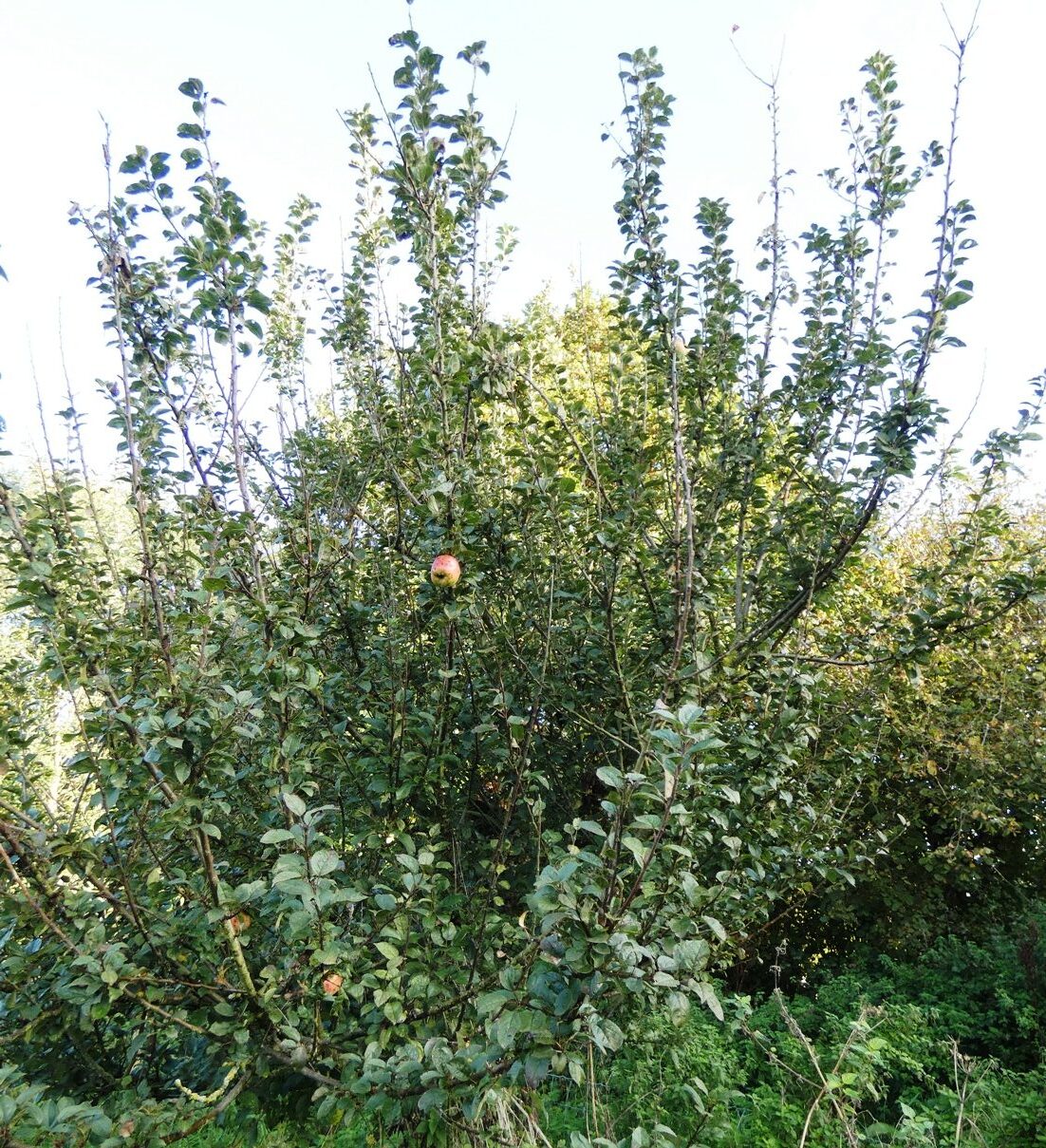Malus domestica
Apple
Species Tolerances
- Drought Tolerance: High
- Shade Tolerance: No
- Waterlogging Tolerance: Low
- Frost Tolerance (trees from warmer climates may be frost tolerant, but their flowers may not be): Yes
- RHS Hardiness: H6
- Optimum Conditions for Growth:
A small to medium sized tree suited to any fertile soil with a range of textures, from sand to heavy clay, that are not too shallow or exposed. Grown best as an orchard tree and where other apple trees are nearby. Avoid shallow sites. No strong dependence on acid or alkaline soil pH. - Susceptibility to Pest/Disease:
Can be susceptible to bacterial disease fire blight, and fungal disease apple scab

Malus domestica/ Bee Happy Plants & Seeds
Service to Pollinators
- Summary of Service to Pollinators:
Excellent source of nectar and pollen, especially if different varieties are grown to extend the flowering period. Useful for building up colonies of all bees in spring, with surplus honey being stored if the weather is good. - Nectar Value to Pollinators: 3 (of 0-3)
- Honeydew Value to Pollinators: 0 (of 0-3)
- Pollen Value to Bees: 3 (of 0-3)
- Flowering Period: April-May
Risks
- Human Toxicity: Non-toxic
- Livestock Toxicity: Non-toxic
- Invasive Risk: No
- Suckering: No
Products
- Edible Fruit: Yes
- Edible Leaves: No
- Edible Sap: No
- Edible Seeds: No
- Honey, major source in UK: Yes
- For any medicinal potential, see 'Further Details' below.
- Timber: No
- Livestock Fodder: Yes
- Other Products:
Hundreds of different cultivars have been bred in the British Isles for centuries. Slow-growing therefore not used in forestry for timber, but a traditional home grown firewood.
Utility
- Nitrogen Fixation: No
- Organic Matter Accumulation: Yes
- Phytoremediation: Yes
- Deacidification: Insufficient Data
- Windbreak: No
- Soil Erosion Control: Yes
- Shade or Shelter: Yes
- Plant Support: Insufficient Data
- Integrated Pest Management: Insufficient Data
- Wildlife Value: Yes
- Wildlife Value Summary:
Good for biodiversity referring to invertebrate diversity feeding on the tree, especially insects. fruit is available to a large range of birds and mammals. - Graduated Nativeness Classification ⓘ: 2 (of 1-10)1. Historic Native
2. Historic Introduction
9. Neutral Introduction
Further Details
This species has been bred into cultivars for hundreds of years so its species form is not relied upon, though would most likely throw forms with very edible fruit from seed.